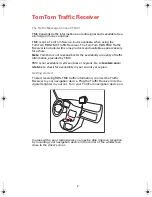
Flight Management System (FMS) for the Agusta AW139/AB139 Helicopter
A28--1146--181
REV 3 Mar 2009
Performance
5-26
Honeywell International Inc. Do not copy without express permission of Honeywell.
WIND AND TEMPERATURE MODEL ENTRIES
When viewing the WIND/TEMP page, the blended wind and
temperature are displayed. Because of this blending, the page does not
necessarily reflect the exact pilot entry. The following describes the
effect of each type of entry on wind and temperature used by the FMS:
D
No Entry
-- When wind or temperature are not entered on any page,
a wind of zero and ISA temperature is assumed for each waypoint
at every altitude. Performance planning is based on zero wind and
ISA temperature plus the blended sensed wind and temperature, as
previously described.
D
Average Entry Only
-- When an average wind and/or temperature
(ISA DEV (deviation)) is entered on the PERF INIT 2/3 page, the
average wind and/or temperature applies to every waypoint in the
flight plan. The wind is ramped down from the entered altitude to
produce a lower wind at lower altitudes. At altitudes above the
tropopause, the wind is assumed to be constant.
D
Entry at Waypoint
-- Wind and temperature are also entered at
each waypoint on the WIND/TEMP page. When an entry is made
at an individual waypoint, the entry erases any previous entry. The
entry is applied to each waypoint forward in the flight plan until a
waypoint with another entry is encountered. Applying the entry to
forward waypoints permits long flight plans to be subdivided into
segments for the purpose of making wind/temperature entries. After
an entry has been made, the 6L prompt CLEAR is displayed. The
CLEAR prompt serves as a reminder of where entries have been
made. The CLEAR prompt also clears those entries.
RECOMMENDED ENTRIES
When the wind and temperature are forecast to be fairly constant over
the route of flight, an ISA DEV entered on the PERFORMANCE INIT
2/3 page is sufficient. When the flight is short, this is typically a good
approximation. The ISA DEV entry must be left at zero when no
forecast is available. The temperature variation at high altitudes are
normally small and do not impact planning as much as wind variations.
When the wind and temperature are predicted to be significantly
different at various flight plan waypoints, waypoint entries must be
made. This is done after an average entry is made or in place of average
entries. Waypoint entries are applied forward, so a few representative
entries are made for segments of any length.
For long flight plans, entering the best estimate of the average cruise
wind is recommended. For shorter flight plans, entered wind matters for
preflight. Once in cruise, the sensed wind takes precedence.
Summary of Contents for FMZ Series
Page 3: ......
















































